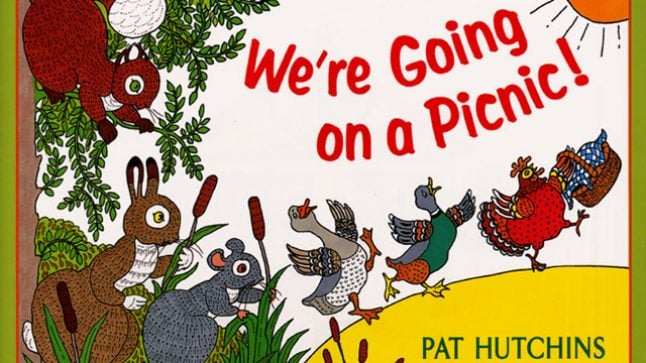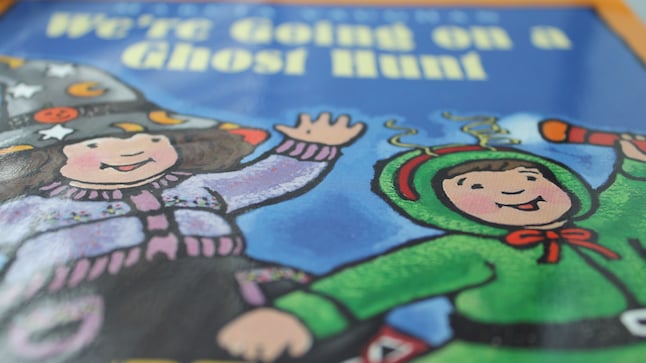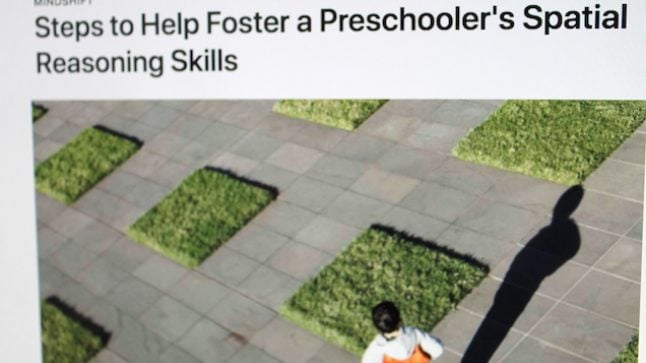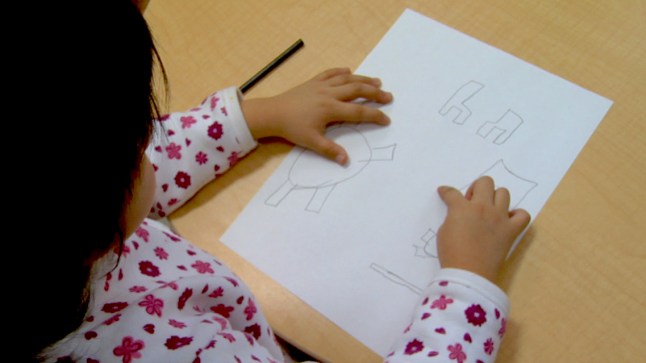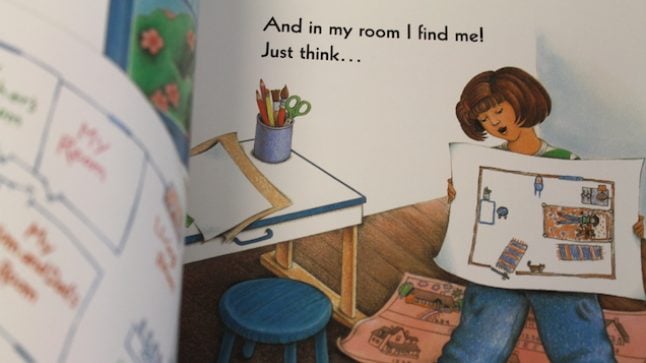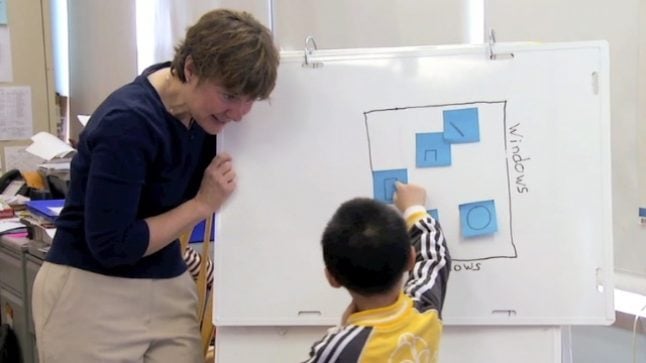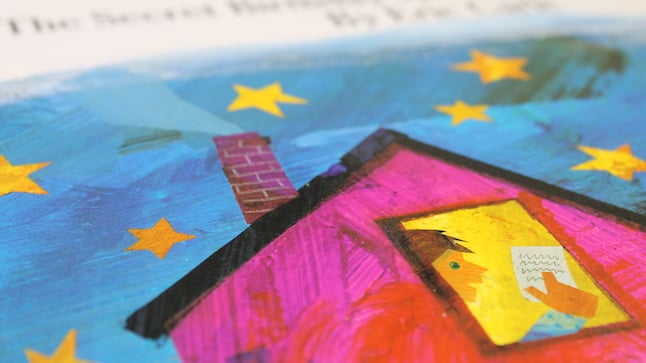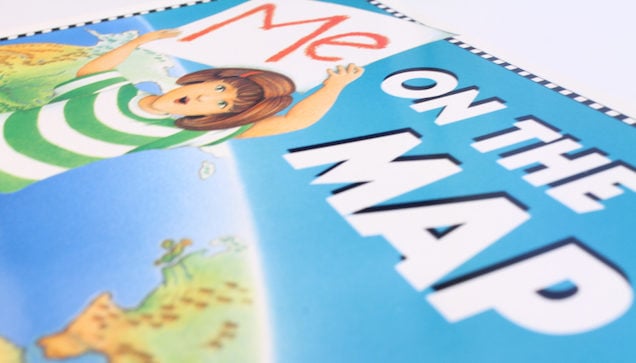Tagged as: Mapping
A Map Activity or Two for Young Learners
The key concepts embedded in a good map activity that makes it mathematical is its relational nature. In order to work in, describe, or model space, we must manage relationships between objects and places, controlling positions to account for angles and lengths. Later on in mathematics, children will learn to apply numbers to such activities, measuring distances and angles, and learning the meaning of “parallel” and “equilateral,” but for now, their efforts will be focused on less precise ways to represent relationships between objects and places.
Children between the ages of 3 and 6 are more than ready to develop their skills at expressing directions from different locations and understanding relative positions. They are fundamentally interested in modeling their world, whether in the block corner or the housekeeping area, and spatial relationships are a large part of what they grapple with there. The more such experiences they have, particularly in the company of adults who help to mathematize them, the easier it will be to make their own representations of space mathematically precise when they get to geometry class.
Above is an excerpt from Big Ideas in Early Mathematics: What Teachers of Young Children Need to Know, Pearson (2014).
Series: Book Ideas
It’s Picnic Time. Don’t Forget to Pack the Math!
May 2, 2017
Many classrooms are planning year-end picnics, so it’s the perfect time to read We’re Going on a Picnic! by the beloved author Pat Hutchins.
- Topic: Spatial Relationships
- Age/Grade Level: Pre-K, Kindergarten, 1st Grade
- Tags Animals, Mapping, Food, Books, Pat Hutchins, We're Going on a Picnic
Series: Book Ideas October 25, 2016
4 Books That Can Expand Children’s Spatial Sense
A great way for kids to explore spatial relationships is to read books that call for them to think about where objects are in relation to something else.
- Topic: Spatial Relationships
- Age/Grade Level: Pre-K, Kindergarten, 1st Grade, 2nd Grade, 3rd Grade
- Tags Mapping, Seasonal, Books, Eric Carle, Tana Hoban, Joan Sweeney, Marcia Vaughan, The Secret Birthday Message, We're Going on a Ghost Hunt, Me on the Map, Over Under and Through
Series: About Early Math January 6, 2016
Spatial Reasoning Skills Predict Later STEM Success
Children with strong spatial reasoning skills are more likely to succeed in STEM fields later on in life.
- Topic: Spatial Relationships
- Age/Grade Level: Pre-K, Kindergarten
- Tags Mapping, Technology, Nature, Books
Series: About Early Math May 13, 2015
Math Opportunities Hidden in Geocache App
Geocaching is an activity that uses the GPS technology on your mobile device to allow for some real-life treasure hunting. It can mathematize otherwise ordinary situations, as it allows children to interact with real-world maps.
- Topic: Spatial Relationships
- Age/Grade Level: Pre-K, Kindergarten, 1st Grade, 2nd Grade, 3rd Grade
- Tags Mapping, Technology, Nature
Series: Book Ideas April 8, 2015
4 Children’s Books to Shape Up Geometry Skills
From recognizing octagonal stop signs to remembering where the cookies are stored, children encounter geometry early and often. There are plenty of children's books that kids love to further pique their interest. We've listed a…
- Topic: Spatial Relationships, Shape
- Age/Grade Level: Infants, Toddlers, Pre-K, Kindergarten, 1st Grade, 2nd Grade, 3rd Grade
- Tags Mapping, Books, Pat Hutchins, Tana Hoban, Joan Sweeney, Michael Rosen, shape, Shapes Shapes Shapes, Me on the Map, Changes Changes, We're Going on a Bear Hunt, Helen Oxenbury
Series: Focus on the Lesson June 20, 2014
Walk with Rosie
In this video, students explore spatial relationships by describing and traversing an obstacle course, then making a map of it.
- Topic: Spatial Relationships
- Age/Grade Level: Pre-K, Kindergarten
- Tags English Language Learner, Mapping, Play, Books, Pat Hutchins, Rosie's Walk
Series: Book Ideas, Ideas at Work February 18, 2013
Exploring Geometry with The Secret Birthday Message
Sharon Hogan and her preschool class at Peterson School had all kinds of fun with the way Eric Carle’s The Secret Birthday Message plays with the two main faces of geometry—shapes and spatial sense.
- Topic: Spatial Relationships
- Age/Grade Level: Pre-K, Kindergarten, 1st Grade
- Tags English Language Learner, Mapping, Books, Eric Carle, The Secret Birthday Message
Series: Book Ideas February 14, 2013
Exploring with Me on the Map and Where Do I Live?
Me on the Map by Joan Sweeney and Where Do I Live? by Neil Chesanow are two books that give children a way to explore where they are in relationship to other things and places.
- Topic: Spatial Relationships
- Age/Grade Level: Pre-K, Kindergarten, 1st Grade, 2nd Grade, 3rd Grade
- Tags Mapping, Books, Joan Sweeney, Me on the Map, Where Do I Live?, Neil Chesanow
Do the math.
Free videos.
Free newsletter packed with ideas.
Free professional learning modules.
